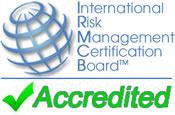NIST AI RMF Playbook
![]()
|
cybersecurity training |
online nist ai rmf playbook training program |
online cybersecurity exam course |
|
CSF training online course |
certification online course |
online information security training course |
online ai risk training course |
online cisa certification course |
online certification course |
national institute of standards and technology critical infrastructure access control and supply chain cybersecurity risks news events risk framework federal government. Critical infrastructure uses the framework helps manage cybersecurity risks access control and supply chain.
Architect Training
Learn how to leverage
the NIST Artificial Intelligence Risk Management Framework 1.0
to develop and integrate AI risk management
into your organization's broader Enterprise Risk Management.
Get trained and certified in NIST Artificial Intelligence Risk Management
The NIST AI Risk Management Framework is designed to equip organizations and individuals with approaches that increase the trustworthiness of AI systems, and to help foster the responsible design, development, deployment, and use of AI systems over time. The Framework training is intended to be practical, adapting to the AI landscape as AI technologies continue to develop. The AI RMF is intended to be utilized by organizations in varying degrees and capacities so society can benefit from AI, while also being protected from its potential risks.
NIST AI RMF 1.0 Architect is the AI risk management credential supporting a career in the responsible design, development, deployment, use, and evaluation of AI products, services, and systems. This certification validates competence and understanding for developing and managing AI risk-management based upon the NIST Artificial Intelligence Risk Management Framework 1.0. 
The purpose of the 5-day course is to:
- Provide thorough coverage of the NIST AI Risk Management Framework 1.0;
- Understand how to integrate NIST AI RMF 1.0 into the organization's greater Enterprise Risk Management;
- Prepare you for your certification exam required for Certified NIST AI RMF 1.0 Architect credentialing; and
- Understand the NIST AI RMF's four Core Functions, 19 Categories, 76 Subcategory desired outcomes (objectives), and its 460 recommended implementation actions (tasks).
NIST AI RMF 1.0 Taxonomy


Upon completion of this training and certificate program, participants will:
- be equipped with knowledge and skills required to develop, manage, monitor, and improve an AI Risk Management System conforming to NIST standards of best practice;
- expand your risk management competency;
- increase your credibility through gaining international recognition; and
- improve your résumé and help to increase your earning potential.
Register for a class (in-person or virtual) and get started today!
Class details
- Duration: 5 days, 8:30 - 4:30
- CPE Credit: 40
- Professional Certification: This course fulfills all prerequisite training requirements for certification exam #RM102 for professional certification as Certified NIST AI RMF 1.0 Architect.

- Materials included with live instructor-led training:
- Class manual (complete hard copy of class presentation)
- 14 days of unlimited access to online practice exams for exam #RM102
- 1 attempt for the online certification exam #RM102
-

- Certificate of Achievement included with class: Upon course completion, we will provide you with an online digital achievement certificate for 40 continuing professional education (CPE) credits that can be used to fulfill requirements for maintaining a variety of professional credentials for fraud examination, accounting, auditing, and information security.
- Recommended prerequisite training: None
- Catering:
- Morning refreshments and snack for live in-person participants
- Lunch
- Afternoon refreshments
- Hotel and/or Travel: Not included
* Access to a soft copy of the NIST AI RMF 1.0 is provided in class.















